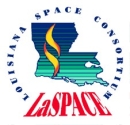The High Altitude Student Platform
 The High Altitude Student Platform (HASP) is designed to carry up to twelve student payloads to an altitude of about 36 kilometers
with flight durations of 15 to 20 hours using a small volume, zero pressure balloon. It is anticipated that the payloads
carried by HASP will be designed and built by students and will be used to flight-test compact satellites or prototypes
and to fly other small experiments.
The High Altitude Student Platform (HASP) is designed to carry up to twelve student payloads to an altitude of about 36 kilometers
with flight durations of 15 to 20 hours using a small volume, zero pressure balloon. It is anticipated that the payloads
carried by HASP will be designed and built by students and will be used to flight-test compact satellites or prototypes
and to fly other small experiments.
HASP includes a standard mechanical, power and communication interface for the student payload, based upon a flight tested
design. This simplifies integration, allows the student payloads to be fully exercised, and minimizes platform development / operation costs.
In addition, HASP is lightweight and has simple mission requirements, thus providing maximum flexibility in the launch schedule.
 The major goals of the HASP Program are to foster student excitement in an aerospace career path and to help address workforce development
issues in this area. HASP plans to provide a "space test platform" to encourage student research and stimulate the development
of student satellite payloads and other space-engineering products. By getting the students involved with every aspect of the program
HASP hopes to fill the gap between and student built sounding balloons and satellites, while also enhancing the technical skills and research
abilities of the students.
The major goals of the HASP Program are to foster student excitement in an aerospace career path and to help address workforce development
issues in this area. HASP plans to provide a "space test platform" to encourage student research and stimulate the development
of student satellite payloads and other space-engineering products. By getting the students involved with every aspect of the program
HASP hopes to fill the gap between and student built sounding balloons and satellites, while also enhancing the technical skills and research
abilities of the students.
 HASP flight program is supported by the NASA Balloon
Program Office (BPO) and the Louisiana Space Consortium (LaSPACE). Currently, HASP flies once a year in September from
the Columbia Scientific Balloon Facility (CSBF) base in Fort Sumner, New Mexico. Typically, HASP requests student payload flight
applications in the fall prior to the flight year. These applications are then reviewed by both the BPO and LaSPACE, and a
selection is made by January of the flight year. Student payload integration with HASP is then accomplished during July / August just
prior to the flight. Once selected as a HASP participant student teams are not charged for the flight. However, student teams must
provide their own funding to support payload development and integration and there are a few document “deliverables” that the
teams must supply.
HASP flight program is supported by the NASA Balloon
Program Office (BPO) and the Louisiana Space Consortium (LaSPACE). Currently, HASP flies once a year in September from
the Columbia Scientific Balloon Facility (CSBF) base in Fort Sumner, New Mexico. Typically, HASP requests student payload flight
applications in the fall prior to the flight year. These applications are then reviewed by both the BPO and LaSPACE, and a
selection is made by January of the flight year. Student payload integration with HASP is then accomplished during July / August just
prior to the flight. Once selected as a HASP participant student teams are not charged for the flight. However, student teams must
provide their own funding to support payload development and integration and there are a few document “deliverables” that the
teams must supply.
See Participant Info for the most recent application package and documentation on the HASP
information. See Flight Information for details about previous HASP flights. See
Presentations for various papers and PowerPoint talks about HASP.







